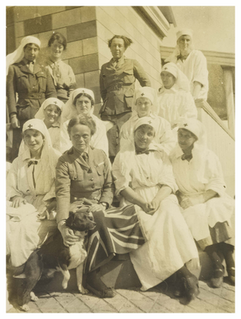 W
WThe Scottish Women's Hospitals for Foreign Services (SWH) was founded in 1914. They were led by Dr. Elsie Inglis and provided nurses, doctors, ambulance drivers, cooks and orderlies. By the end of World War I 14 medical units had been outfitted and sent to serve in Corsica, France, Malta, Romania, Russia, Salonika and Serbia.
 W
WWilhelmina Hay Abbott, also known by the name "Elizabeth Abbott," was a Scottish suffragist, editor, and feminist lecturer, and wife of author George Frederick Abbott.
 W
WMillicent Sylvia Armstrong was an Australian playwright and farmer who wrote primarily about the experiences of country life in early 20th century Australia.
 W
WMary Josephine Bedford was a philanthropist in Brisbane, Queensland, Australia, who was involved in family welfare and children's development through her involvement with the Playground Association and the Crèche and Kindergarten Association. She was awarded the Order of St Sava for her services as an ambulance driver in World War I.
 W
WAgnes Elizabeth Lloyd Bennett was a New Zealand doctor, a Chief Medical Officer of a World War I medical unit and later was awarded an O.B.E. for her services in improving the health of women and children.
 W
WAgnes Forbes Blackadder Savill was a Scottish medical doctor. Blackadder became the first female graduate of the University of St Andrews when she gained her M.A. degree on 29 March 1895. She was the first consultant dermatologist to be appointed in 1907 at St. John's Hospital, an appointment which was also notable as one of the first appointments of a woman consultant at a hospital that was not exclusively for women. During World War I, she served as a radiographer at the Scottish Women's Hospital at Royaumont in France and pioneered radiography of gangrene.
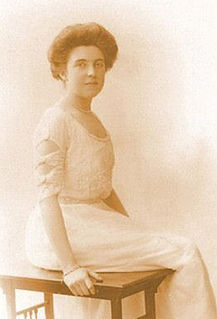 W
WElsie Edith Bowerman was a British lawyer, suffragette, political activist, and RMS Titanic survivor.
 W
WLilian Violet Cooper was a British-born medical practitioner in Queensland, Australia. She was the first female doctor registered in Queensland.
 W
WElsie Jean Dalyell was an Australian medical doctor who specialised in pathology. During World War I, she served in the Royal Army Medical Corps across Europe, and was appointed an Officer of Order of the British Empire upon the conclusion of the war.
 W
WMary Clementina De Garis was an Australian doctor. During World War I she worked at the Ostrovo Unit in Serbia for the Scottish Women's Hospitals and after the war worked at Geelong Hospital in Australia. She was an advocate of antenatal and postnatal care.
 W
WCommandant Violet Blanche Douglas-Pennant was a British philanthropist and supporter of local government who served as the second commandant of the Women's Royal Air Force (WRAF) until her dismissal in August 1918.
 W
WStella Maria Sarah Miles Franklin, known as Miles Franklin, was an Australian writer and feminist who is best known for her novel My Brilliant Career, published by Blackwoods of Edinburgh in 1901. While she wrote throughout her life, her other major literary success, All That Swagger, was not published until 1936.
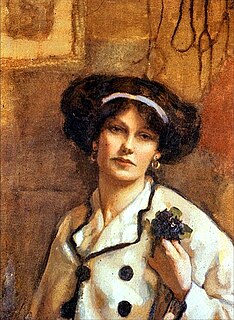 W
WNorah Neilson Gray was a Scottish artist of the Glasgow School. She first exhibited at the Royal Academy while still a student and then showed works regularly at the Paris Salon and with the Royal Academy of Scotland. She was a member of The Glasgow Girls whose paintings were exhibited in Kirkcudbright in July and August 2010.
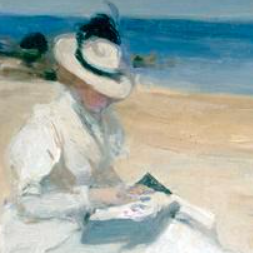 W
WEdith Hacon also known as Rhyllis Llewellyn Hacon, later Mrs "Amaryllis" Robichaud, was a leading Scottish suffragist from Dornoch, a World War One nursing volunteer, as well as an international socialite.
 W
WHelen Beatrice de Rastricke Hanson was a British physician, missionary and suffragist.
 W
WMabel Hardie (1866–1916) was a British doctor. She was a war surgeon at the Scottish Women's Hospital and is named in the First World War roll of honour.
 W
WKatherine Mary Harley was a suffragist. In 1913 she proposed and organised the Great Pilgrimage on behalf of the National Union of Women's Suffrage Societies. During the First World War she helped to found and organise the Women's Emergency Corps.
 W
WEvelina Haverfield was a British suffragette and aid worker. In the early part of the 20th century, she was involved in Emmeline Pankhurst's militant women's suffrage organisation the Women's Social and Political Union. During World War I she worked as a nurse in Serbia. After the war, she returned to Serbia with her companion Vera Holme to set up an orphanage in Bajina Bašta, a town in the west of the country.
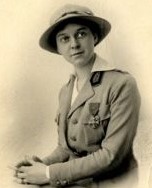 W
WLydia Manley Henry DSc was the first female graduate in medicine from the University of Sheffield. She served with the Scottish Women's Hospitals for Foreign Service during the First World War. She was awarded the Croix de Guerre by the French government. For her thesis on gangrene, based on her wartime experience, she was awarded the degree of MD, the first woman to graduate with this degree from the University of Sheffield.
 W
WRuth Holden was an American paleobotanist and nurse, who died in Russia during World War I.
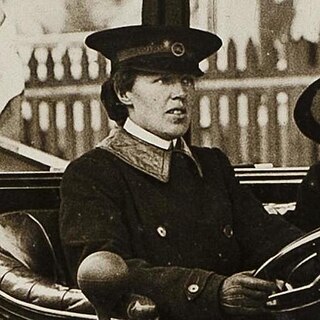 W
WVera Louise Holme, also known as Vera 'Jack' Holme, was a British actress and a suffragette. She was known as the Pankhursts' chauffeur.
 W
WLaura Margaret Hope was the first woman to graduate in medicine and surgery at the University of Adelaide and Australia's first woman surgeon. With her husband Charles she devoted over thirty years to medical and Baptist missionary work in Bengal and Serbia.
 W
WAlice Hutchison was a British doctor who served in the Balkan and First World Wars. She was one of the first women to lead a war-time hospital unit.
 W
WIsabel Galloway Emslie Hutton, Lady Hutton CBE, previously Isabel Galloway Emslie, was a Scottish physician who specialised in mental health and social work. Emslie served leading units in Dr. Elsie Inglis's Scottish Women's Hospitals for Foreign Service in the front line in World War I and won awards from the British, Serbian, Russian and French. Emslie married British military officer Lt General Sir Thomas Jacomb Hutton.
 W
WElsie Maud Inglis was a Scottish doctor, surgeon, teacher, suffragist, and founder of the Scottish Women's Hospitals, and the first woman to hold the Serbian Order of the White Eagle.
 W
WMary Hannah Frances Ivens CBE FRCOG was an obstetrician and gynaecologist who was the first woman appointed to a hospital consultant post in Liverpool. During the First World War she was chief medical officer at the Scottish Women's Hospital at Royaumont, northeast of Paris. For her services to the French forces she was awarded the Légion d'honneur and the Croix de Guerre.
 W
WLouisa Jordan was a Scottish nurse who died in service during the First World War.
 W
WOlive May Kelso King was an adventurer and mountain climber. During World War I she drove ambulances for the Scottish Women's Hospitals and later the Serbian Army. After the war she raised money for the Serbian people and later in life she was a public speaker.
 W
WSybil Lonie Lewis, OSS was an early Scottish female surgeon who served with distinction in Serbia during the First World War. In 1917 she helped to establish the Serbian Relief Fund.
 W
WRotha Beryl Lintorn Lintorn-Orman was the founder of the British Fascisti, the first avowedly fascist movement to appear in British politics.
 W
WElizabeth Hilda Lockhart Lorimer was a British classical scholar who spent her career at Oxford University. Her best known work was in the field of Homeric archaeology and ancient Greece, but she also visited and published on Turkey, Albania and the area that later became Yugoslavia. She took the position of vice-principal of Somerville College during the Second World War.
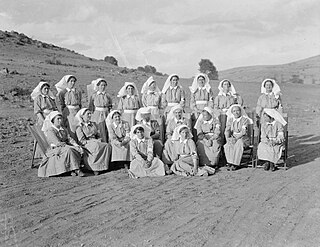 W
WThe Ostrovo Unit was a Field hospital unit with Transport Coloumn of the Scottish Women's Hospitals. It comprised approximately 200 tents and was situated near Lake Ostrovo, Macedonia during the First World War under the command of the Serbian Army. It was often called The America Unit as the money to fund it came from America and except for a few dressing stations, it was the Allied hospital nearest the front.
 W
WAlexandrina Matilda MacPhail, OBE was a Scottish doctor who graduated from the London School of Medicine for Women. In 1887, she became a missionary and doctor in India, where she founded what would become a large hospital in Madras. During the First World War, she also worked for the Scottish Women's Hospitals for Foreign Service as a doctor in Serbia and France.
 W
WKatherine Stewart MacPhail OBE was a Scottish surgeon. During World War I, she served as Chief Medical Officer of two units of the Scottish Women's Hospitals for Foreign Service. She cared for the wounded in Serbia, France, and the Thessaloniki Front. In 1921, during her stay in Serbia, she founded the country's first children's hospital. While she is remembered as a national hero in Serbia, she was criticized by some for providing her expertise in Serbia rather than in her own country. Her honors include several medals, plaques, and a postage stamp.
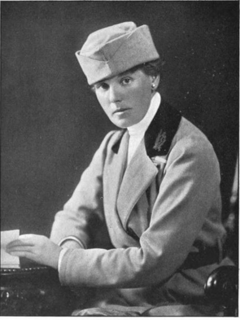 W
WDame Anne Louise McIlroy, known as Louise McIlroy, was a distinguished and honoured Irish-born British physician, specialising in obstetrics and gynaecology. She was both the first woman to be awarded a Doctor of Medicine (MD) degree and to register as a research student at the University of Glasgow. She was also the first woman medical professor in the United Kingdom.
 W
WGladys Miall-Smith (1888-1991) was a British doctor, and a notable case in the fight to remove the marriage bar for women. During WW1, she was a doctor for the French Red Cross, and worked in the Scottish Women's Hospital at Royaumont 1918–19. She was the first doctor in Welwyn Garden City.
 W
WEthel Mary Moir, a nursing orderly who served with the Scottish Women's Hospitals for Foreign Service on the Eastern Front during World War I. Moir recorded her experiences serving with the Elsie Inglis Unit in Russia and Serbia in two volumes of diaries.
 W
WHarriet Christina Newcomb was an English feminist, activist, and educationist. She was a proponent of progressive education and improved teacher training, in both Britain and Australia, and was an active member of the Women's Freedom League.
 W
WRuth Nicholson FRCOG was an English obstetrician and gynaecologist who served as a surgeon in the Scottish Women's Hospital at Royaumont, France during the First World War. For this work she was awarded the Croix de Guerre and the Médaille d’Honneur des Épidémies by the French government. After the war she specialised in obstetrics and gynaecology as Clinical Lecturer and Gynaecological Surgeon at the University of Liverpool with consultant appointments at Liverpool hospitals. She was a founder member of the Royal College of Obstetricians and Gynaecologists in 1929, being elevated to fellow of the College in 1931.
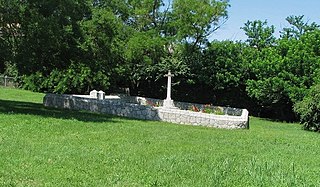 W
WThe Conwealth Military Cemetery is located in Niš, Serbia in the municipality of Palilula. It is listed as a Protected Cultural Monument of the Republic of Serbia. The cemetery is located 1 Miladina Popovića Street, in the district of Delijski of Niš and approximately 500metres from Ćele Kula.
 W
WHilda Mary Isabel Petrie was an Irish-born British Egyptologist and wife of Flinders Petrie, the father of scientific archaeology. Having studied geology, she was hired by Flinders Petrie at age 25 as an artist, which led to their marriage and a working partnership that endured for their lifetimes. Hilda travelled and worked with Flinders Petrie to excavate and record numerous sites in Egypt, and later in Palestine. This included directing some excavations herself, and working in often difficult and dangerous conditions to produce copies of tomb hieroglyphs and plans, and to record the work for reports to the Egypt Exploration Fund. When the British School of Archaeology in Egypt was founded in 1905 in London by Flinders Petrie, she worked as its secretary and fundraiser to secure support for the school and their continued excavations. Hilda took part in archaeological excavations and surveys throughout her married life, except for a period while their two children were young. Her work was published, and she also gave public lectures in London and elsewhere.
 W
WMary Elizabeth Phillips (1875–1956), also known as Mary Eppynt Phillips, was the first woman from Cardiff University to qualify as a medical doctor. While she was sometimes called the "first woman doctor in Wales," she herself disputed that designation.
 W
WThe Scottish Women's Hospital at Royaumont was a medical hospital during World War I active from January 1915 to March 1919 operated by Scottish Women's Hospitals (SWH), under the direction of the French Red Cross and located at Royaumont Abbey. The Abbey is a former Cistercian abbey, located near Asnières-sur-Oise in Val-d'Oise, approximately 30 km north of Paris, France. The hospital was started by Dr Frances Ivens and founder of SWH, Dr Elsie Maud Inglis. It was especially noted for its performance treating soldiers involved in the Battle of the Somme.
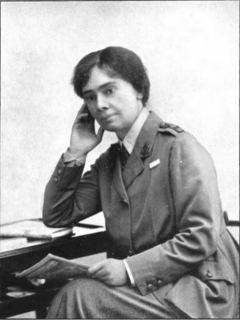 W
WEleanor Soltau (1877–1962) was an English doctor who led the first unit of the Scottish Women's Hospitals for Foreign Service in Serbia.
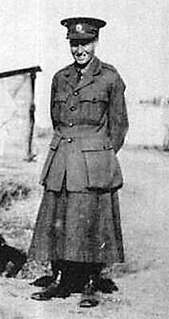 W
WLeslie Joy Whitehead, known as Josephine, Joy, or Jo, was a Canadian female soldier during the First World War. Whitehead was one of a number of women from the western world to enter the frontline as a combatant during World War I after she enlisted as a man in the Royal Serbian Army at the age of 22. During her time on the Balkan Front, she would go on to work as a military engineer, a guard for the Scottish Women's Hospitals, and become a prisoner of war under the Bulgarian Army following the invasion of Belgrade on October 8, 1915.
 W
W